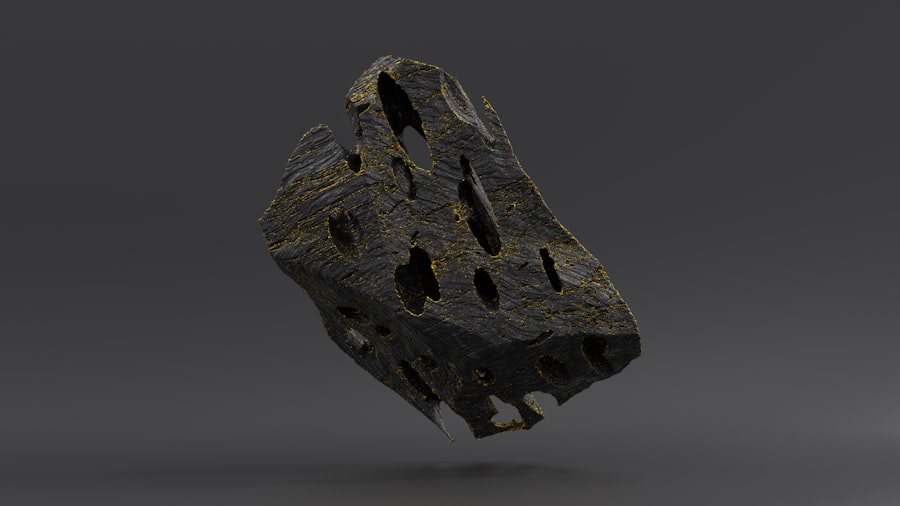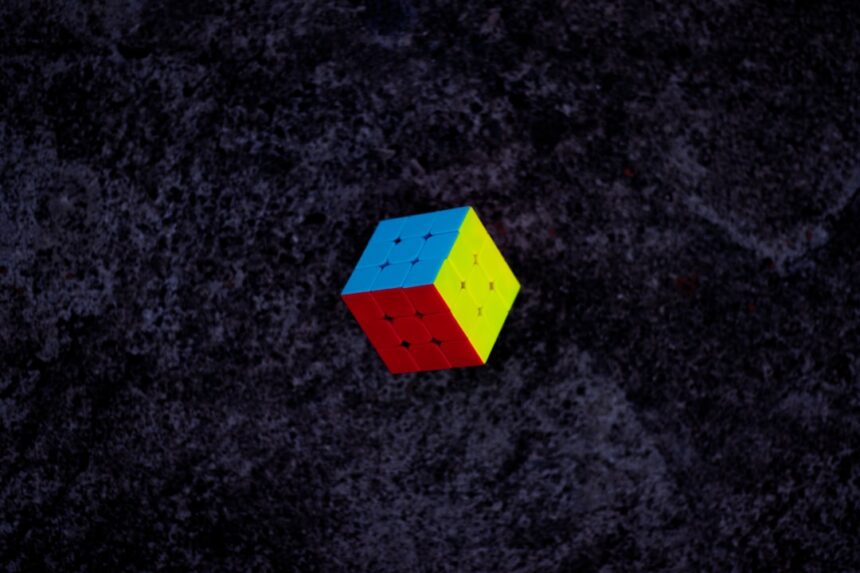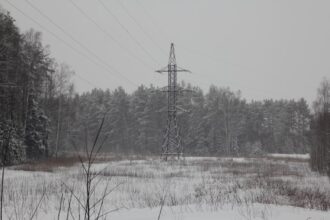In the small town of Haigerloch, Germany, a remarkable discovery was made that would later capture the attention of historians and scientists alike. During the final days of World War II, as the conflict drew to a close, German scientists were engaged in a secretive project aimed at developing nuclear technology. It was within this context that the Haigerloch Uranium Cube was unearthed.
This cube, composed of uranium metal, was part of an experimental reactor designed by physicist Werner Heisenberg and his team. The discovery of this cube not only highlighted the advanced scientific endeavors of Nazi Germany but also raised questions about the implications of nuclear research during a time of war. The circumstances surrounding the discovery were shrouded in secrecy.
As Allied forces advanced into Germany, many scientific projects were abandoned or destroyed to prevent them from falling into enemy hands.
It was not until after the war that this significant artifact came to light, revealing the extent of Germany’s nuclear ambitions.
The cube itself, weighing approximately 600 grams, was a testament to the scientific prowess of its creators and the potential dangers that nuclear technology posed.
Key Takeaways
- The Haigerloch Uranium Cube was discovered in a secret Nazi nuclear research facility in 1945.
- The significance of the Uranium Cube lies in its potential use in the development of nuclear weapons during World War II.
- The mystery surrounding the Uranium Cube includes questions about its intended purpose and how it ended up in Haigerloch.
- Haigerloch played a significant role in World War II as a site for Nazi nuclear research and development.
- The scientific importance of the Uranium Cube lies in its potential for advancing nuclear research and technology.
The Significance of the Uranium Cube
The significance of the Haigerloch Uranium Cube extends far beyond its physical form. It represents a pivotal moment in the history of nuclear science and technology. The cube is often viewed as a symbol of the race for nuclear power that characterized the mid-20th century.
Its existence underscored the fact that various nations were engaged in intense competition to harness atomic energy for both military and civilian purposes. The cube’s design and construction reflected advanced scientific principles that would later be foundational in the development of nuclear reactors worldwide. Moreover, the Haigerloch Uranium Cube serves as a reminder of the ethical dilemmas associated with nuclear research.
While it was initially conceived for military applications, the potential for peaceful uses of nuclear energy was also recognized. The duality of its purpose raises questions about responsibility in scientific exploration and the consequences of technological advancements. As nations grappled with the implications of nuclear power, the Haigerloch Uranium Cube became emblematic of both innovation and peril.
The Mystery Surrounding the Uranium Cube

The Haigerloch Uranium Cube is enveloped in an air of mystery that continues to intrigue researchers and historians. Much about its origins and intended use remains unclear, leading to speculation and debate among experts. While it is known that the cube was part of a larger project aimed at developing a nuclear reactor, details about its specific role and functionality are still being uncovered.
This ambiguity has fueled interest in the cube as a historical artifact, prompting investigations into the motivations and actions of the scientists involved. Additionally, the circumstances under which the cube was discovered add to its enigmatic nature. The chaotic environment of post-war Germany, coupled with the efforts to conceal scientific advancements from Allied forces, created a backdrop ripe for intrigue.
Questions arise about what might have happened had the war continued longer or if different decisions had been made regarding nuclear research. The mystery surrounding the Haigerloch Uranium Cube invites further exploration into not only its physical properties but also its broader implications for science and society.
The Role of Haigerloch in World War II
| Event | Details |
|---|---|
| Haigerloch’s Role | Haigerloch was the location of the German nuclear energy project during World War II, and it was the site of the first successful nuclear reactor experiment in 1944. |
| German Nuclear Program | The German nuclear program, also known as the Uranium Club, aimed to develop nuclear weapons during the war. |
| Experimental Reactor | The experimental nuclear reactor in Haigerloch was built under the supervision of nuclear physicist Kurt Diebner and successfully achieved criticality in 1944. |
| Allied Occupation | After the war, Haigerloch was occupied by the French forces, and the nuclear research materials and scientists were taken to France and the United States as part of the Alsos Mission. |
Haigerloch played a unique role during World War II as a site of clandestine scientific research. The town became a focal point for German physicists who were working on nuclear technology under the auspices of the Nazi regime. This research was part of a broader effort to develop weapons that could potentially turn the tide of war in favor of Germany.
The presence of prominent scientists such as Heisenberg in Haigerloch underscored its importance as a center for advanced scientific inquiry during this tumultuous period. The activities in Haigerloch were not without their challenges. As Allied forces closed in, scientists faced increasing pressure to complete their work while simultaneously grappling with ethical considerations regarding their research’s potential applications.
The urgency to achieve breakthroughs in nuclear technology was palpable, yet many scientists were conflicted about contributing to weapons development. This tension between scientific ambition and moral responsibility defined much of the work conducted in Haigerloch and ultimately influenced the legacy of the uranium cube.
The Scientific Importance of the Uranium Cube
From a scientific perspective, the Haigerloch Uranium Cube holds considerable importance in understanding early nuclear research. Its design reflects innovative approaches to reactor technology that were being explored during World War
Furthermore, studying the Haigerloch Uranium Cube allows researchers to trace the lineage of nuclear technology back to its roots. By examining this artifact, scientists can gain valuable insights into early experiments that laid the groundwork for modern nuclear reactors. The cube serves as a tangible link to a pivotal moment in scientific history, illustrating how theoretical concepts were translated into practical applications during a time when such advancements were fraught with ethical implications.
The Race for Nuclear Power

The discovery of the Haigerloch Uranium Cube occurred during an era marked by an intense race for nuclear power among various nations. Following World War II, countries recognized the potential benefits of harnessing atomic energy for both military and civilian purposes. The competition to develop nuclear capabilities became a defining feature of international relations during the Cold War, as nations sought to establish themselves as leaders in this transformative field.
The implications of this race extended beyond national security concerns; they also encompassed energy production and technological advancement. The knowledge gained from projects like those conducted in Haigerloch contributed to breakthroughs in nuclear power generation that would shape energy policies for decades to come. As nations invested heavily in research and development, they grappled with questions about safety, environmental impact, and ethical considerations surrounding nuclear energy.
The Haigerloch Uranium Cube in Modern Times
In contemporary times, the Haigerloch Uranium Cube has garnered renewed interest as historians and scientists seek to understand its significance within the broader context of nuclear research. Museums and educational institutions have begun to showcase artifacts related to early nuclear experiments, including replicas or representations of the uranium cube itself. This renewed focus on historical artifacts serves not only to educate future generations but also to foster discussions about the implications of nuclear technology.
Moreover, ongoing research into the Haigerloch Uranium Cube continues to yield new insights into its properties and historical context. Scientists are employing modern analytical techniques to study its composition and structure more thoroughly than ever before. This research not only enhances understanding of early nuclear science but also informs current discussions about safety protocols and advancements in reactor design.
The Impact of the Uranium Cube on Nuclear Research
The impact of the Haigerloch Uranium Cube on nuclear research cannot be overstated. As one of the earliest examples of uranium used in reactor design, it has become a reference point for understanding how early experiments shaped subsequent developments in nuclear technology. Researchers have drawn upon lessons learned from projects like those conducted in Haigerloch to inform modern reactor designs and safety measures.
Additionally, the uranium cube serves as a case study in balancing scientific innovation with ethical considerations. As researchers continue to explore its legacy, they are reminded of the responsibilities that come with scientific discovery. The lessons learned from Haigerloch resonate today as nations navigate complex issues surrounding nuclear energy production, waste management, and non-proliferation efforts.
The Controversy Surrounding the Uranium Cube
Despite its scientific significance, the Haigerloch Uranium Cube is not without controversy. Its association with Nazi Germany raises ethical questions about how societies remember and engage with historical artifacts linked to oppressive regimes. Some argue that celebrating or showcasing such artifacts risks glorifying their origins rather than critically examining their implications.
While many were driven by a desire for knowledge and advancement, their work also contributed to devastating consequences during wartime. This duality complicates discussions about responsibility within scientific communities and highlights ongoing tensions between innovation and ethics.
The Future of the Haigerloch Uranium Cube
Looking ahead, the future of the Haigerloch Uranium Cube remains uncertain yet promising for continued exploration and understanding. As interest in historical artifacts related to nuclear science grows, there is potential for further research initiatives aimed at uncovering more about its origins and implications. Collaborative efforts among historians, scientists, and educators could lead to new discoveries that enhance public awareness about both past achievements and ongoing challenges within nuclear research.
Moreover, as societies grapple with pressing issues related to energy production and climate change, revisiting historical artifacts like the uranium cube may provide valuable insights into navigating contemporary dilemmas surrounding technology’s role in shaping our future.
The Legacy of the Uranium Cube
The legacy of the Haigerloch Uranium Cube is multifaceted, encompassing scientific achievement, ethical considerations, and historical reflection. It stands as a testament to human ingenuity while simultaneously serving as a cautionary tale about the potential consequences of unchecked scientific ambition. As researchers continue to study this artifact, they are reminded not only of its significance within nuclear history but also of their responsibility to ensure that future advancements are pursued with care and consideration for their broader impact on society.
Ultimately, the Haigerloch Uranium Cube encapsulates a critical chapter in humanity’s relationship with science and technology—a chapter marked by both remarkable progress and profound ethical dilemmas that continue to resonate today. Its story invites ongoing dialogue about how societies can learn from history while striving toward a more responsible approach to innovation in an increasingly complex world.
The Haigerloch uranium cube mystery, a fascinating tale from World War II, delves into the remnants of Germany’s nuclear ambitions. These cubes, part of a failed nuclear reactor experiment, have intrigued historians and scientists alike. For those interested in exploring more about the historical context and the scientific endeavors of that era, an insightful article can be found on the War Room website. This piece provides a deeper understanding of the technological race during the war and the implications of these mysterious artifacts. You can read more about it by visiting this article.
WATCH THIS! 🪖How Stolen Nazis Built Cold War Power
FAQs
What is the Haigerloch uranium cube mystery?
The Haigerloch uranium cube mystery refers to the discovery of a mysterious uranium cube in a German town called Haigerloch during World War II.
When was the uranium cube discovered?
The uranium cube was discovered in April 1945, towards the end of World War II.
Where was the uranium cube found?
The uranium cube was found in a basement in Haigerloch, a town in southwestern Germany.
What is the significance of the uranium cube discovery?
The discovery of the uranium cube in Haigerloch is significant because it provides insight into the Nazi regime’s efforts to develop nuclear weapons during World War II.
What happened to the uranium cube after its discovery?
After its discovery, the uranium cube was confiscated by the Allied forces and taken to the United States for further analysis.
Was the uranium cube part of a Nazi nuclear weapons program?
The exact purpose of the uranium cube is still a subject of debate among historians and scientists. Some believe it may have been part of the Nazi nuclear weapons program, while others argue that it may have been part of a civilian research project.
Is the Haigerloch uranium cube on public display?
Yes, the Haigerloch uranium cube is on public display at the Deutsches Museum in Munich, Germany.




